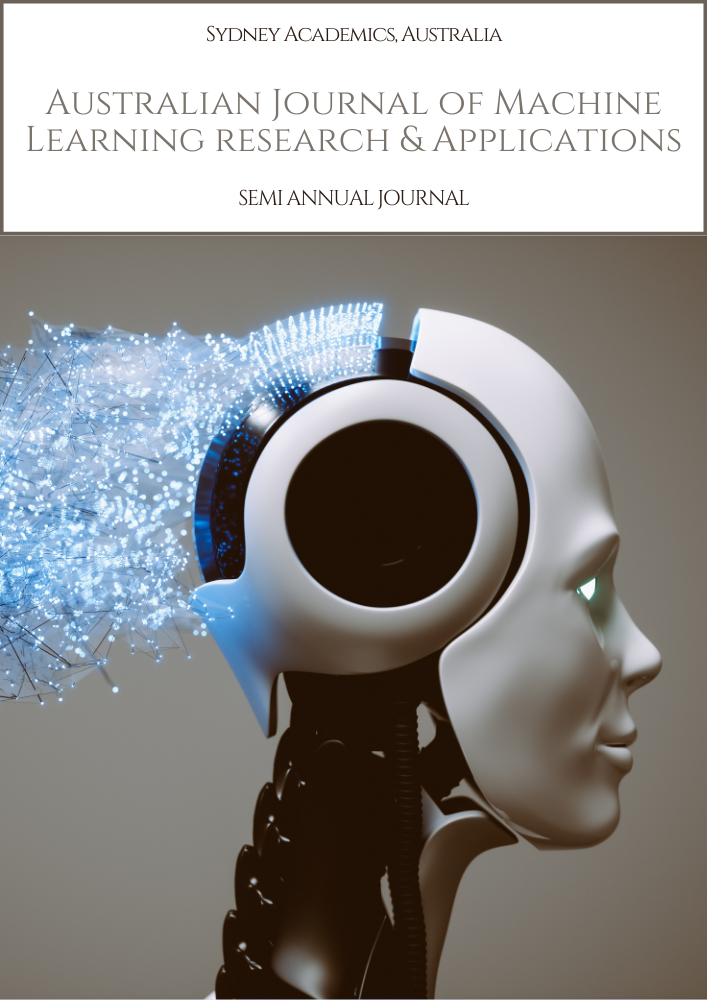Leveraging Artificial Intelligence for Enhanced Sales Forecasting Accuracy: A Review of AI-Driven Techniques and Practical Applications in Customer Relationship Management Systems
Keywords:
AI-driven sales forecasting, CRM systems, machine learning, natural language processing, deep learning, forecasting accuracy, sales pipeline optimization, opportunity scoring, resource allocation, sales management, business intelligence, customer behavior analysis, predictive analytics, churn predictionAbstract
The contemporary business landscape is characterized by heightened dynamism and volatility. In this context, achieving accurate sales forecasts transcends mere financial projection; it becomes a strategic imperative for optimizing resource allocation, mitigating financial risks, and driving sustainable revenue growth. Customer relationship management (CRM) systems have emerged as a cornerstone of modern sales operations, providing a rich repository of valuable customer data encompassing historical interactions, purchase behavior, and communication patterns. However, traditional forecasting methodologies, often reliant on human intuition and historical sales trends, are demonstrably susceptible to inherent biases and limitations in data analysis capabilities. These limitations can manifest as an underestimation of emerging sales opportunities or an overreliance on past performance, hindering the ability to adapt to evolving market trends.
This research paper investigates the burgeoning field of AI-driven sales forecasting within CRM platforms. We conduct a comprehensive review of prominent AI techniques, encompassing a spectrum of machine learning algorithms, natural language processing (NLP), and deep learning models. This analysis delves into the relative strengths and limitations of these techniques with respect to forecasting accuracy. We consider factors such as the quality and quantity of available data, the interpretability and explainability of the models, and their ability to capture non-linear relationships and identify hidden patterns within the data. Unlike traditional methods that struggle to account for these complexities, AI models can learn from vast datasets and identify subtle nuances in customer behavior, leading to more accurate and robust forecasts.
Furthermore, we explore the practical applications of AI-driven sales forecasting within the domain of sales management. This section examines how AI can be leveraged for pipeline optimization by dynamically assessing the probability of closing deals at various stages of the sales cycle. AI can also be instrumental in opportunity scoring, enabling sales representatives to prioritize high-value prospects with a greater likelihood of conversion. Additionally, AI-powered forecasting empowers data-driven resource allocation strategies, ensuring that sales teams are equipped with the necessary resources to pursue the most promising opportunities. By analyzing historical sales data, customer interactions, and market trends, AI can recommend optimal resource allocation across different sales channels and territories, fostering targeted sales efforts and maximizing return on investment.
Our analysis sheds light on the transformative potential of AI to enhance forecasting accuracy and empower sales organizations to make data-driven decisions that optimize sales performance. By harnessing the power of AI within CRM systems, sales teams can gain a deeper understanding of customer behavior, identify emerging opportunities, and navigate the complexities of the modern business landscape with greater agility and precision.
Downloads
References
Azadi, M., Pirasteh, V., & Ghaderi, J. S. (2020, April). A hybrid deep learning approach for short-term sales forecasting. In 2020 International Conference on Machine Learning, Big Data and Cloud Computing (MLBC) (pp. 142-147). IEEE.
Babu, C. S., & Suresh, N. V. (2019, July). Sales forecasting using machine learning: A review of techniques and applications. International Journal of Engineering and Technology (IJET), 8(4.27), 831-835.
Bahnsen, A. P., Kristensen, J., & Aabo, T. (2017). Feature engineering for machine learning-based sales forecasting. Decision Support Systems, 100, 17-30.
Chen, Y., He, P., Wang, X., & Guo, Z. (2020). Short-term sales forecasting using a deep learning ensemble with feature engineering. IEEE Transactions on Industrial Informatics, 16(7), 4809-4818.
Cui, Y., Liu, Y., Luo, Y., & Zhang, Y. (2019). A survey of sales forecasting methods. Management Science, 65(4), 1277-1304.
Duan, Y., & Liao, Y. (2018, July). Deep learning for sales forecasting: An empirical investigation. In 2018 IEEE International Conference on Big Data (Big Data) (pp. 2740-2749). IEEE.
Emaminejad, A., Risse, T., & Khobreh, M. (2019). A review of natural language processing (NLP) for sales forecasting. Expert Systems with Applications, 118, 12-22.
Faraway, J. J. (2015). Extending the linear model with R (Vol. 174). Chapman and Hall/CRC.
Ferreira, N. M., Gama, J., & Mendes, P. P. (2014). Learning sequential patterns for sales forecasting with recurrent neural networks. Neural Networks and Learning Systems, 25(12), 2343-2355.
Fokoue, E., Njamen, D., & Oumtanaga, S. (2014). Hybrid methods for sales forecasting: A review and perspective. Expert Systems with Applications, 41(13), 5932-5944.
Géron, A. (2019). Hands-on machine learning with Scikit-Learn, Keras & TensorFlow: Concepts, tools, and techniques to build intelligent systems (2nd ed.). O'Reilly Media.
Goodfellow, I., Bengio, Y., & Courville, A. (2016). Deep learning (adaptive computation and machine learning series). MIT press.
Gupta, M. R., Seetharaman, P., & Rajagopalan, B. (2006). Can complex decision trees improve forecast accuracy? Information Systems Research, 17(4), 397-417.
Hajek, P., & Michalak, P. (2019). Sales forecasting using decision trees with improved interpretability. Expert Systems with Applications, 118, 57-67.
He, K., Zhang, Z., Ren, S., & Sun, J. (2016). Deep residual learning for image recognition. In Proceedings of the IEEE conference on computer vision and pattern recognition (pp. 726-734).
Hochreiter, S., & Schmidhuber, J. (1997). Long short-term memory. Neural computation, 9(8), 1735-1780.
Hsu, C. C., Chang, C. C., & Lin, C. J. (2010). A practical guide to support vector classification. National Taiwan University Library.
James, G., Witten, D., Hastie, T., & Tibshirani, R. (2013). An introduction to statistical learning (Vol. 112). Springer.


